10 Flooring Must-Knows Before You Step In Store!
Hi ,
I hope this email finds you well. I recently did a social post on my very popular Facebook page, asking people what they’d like to learn more about, on the renovating front in 2024. Surprisingly, flooring came back the number 1 request! So, your wish is my command folks, my first blog of the year…
Now let’s face it … if you’re renovating your home now or in the not-too-distant future, chances are, you’ll need new flooring. But oh, where do you start?
Step into any flooring store & you’ll feel like you’re in a parallel universe with hundreds of products to choose from. The array of choices is dizzying – tiles, carpet, hardwood, laminate, engineered, vinyl & something called ‘eco-friendly bamboo’ which sounds like it should be on a panda’s lunch menu. You’ll wander around the store with each one shouting, “Pick me! I’m the most spill-proof!”, “I’m the strongest!”, “I look the best!”. Choices, choices, which way do you go?
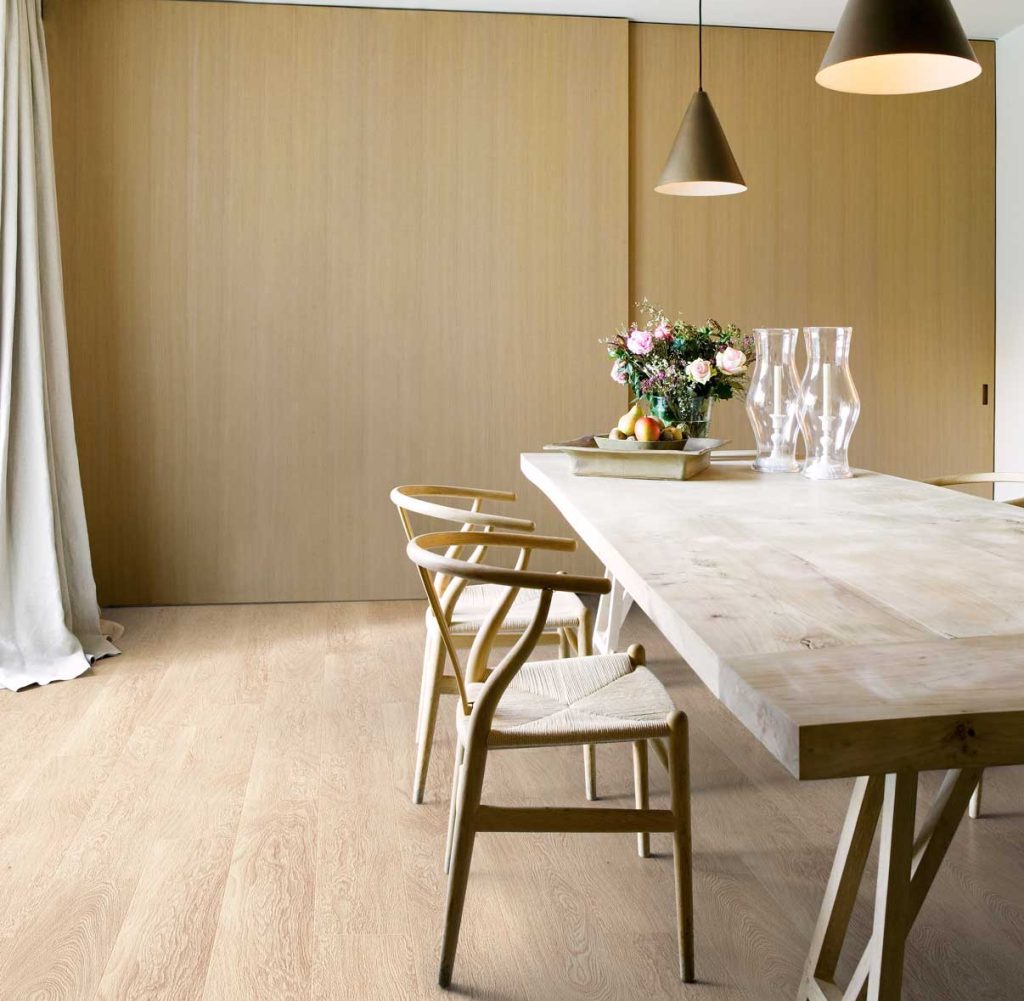 Flooring Xtra’s Laminate Floorboards – Xpert Pro Moray in Colour “Buckie”.
Flooring Xtra’s Laminate Floorboards – Xpert Pro Moray in Colour “Buckie”.
To save your sanity, here’s 10 things you should mull over to get your flooring right. Get it wrong & you’ll be doing the perpetual tango of regret, where every step echoes “should-have-chosen-differently” in the wise old halls called hindsight.
1. YOUR STRUCTURAL BASE
All floors generally have a structural base, be it a concrete slab or in the case of a home suspended on piers, products such as yellow tongue flooring, compressed fibro, fibre cement sheeting or the like. Homeowners then typically place a more decorative flooring product straight over the top of that base, such as floorboards, carpet, tiles & so on …
What flooring product you ultimately run with will depend on your structural base to begin with. When choosing your flooring, be sure to tell the store salesperson what your structural floor base is & what condition it’s in.
If your structural base looks like it’s been on a long vacation at the Struggle Resort, you might find there’s a bit of work needed before any new flooring can be installed. There could be uneven floor surfaces, water damage, timber rot & a raft of other curly issues which you’ll need to get sorted first. If those issues have become larger than the lunar landing, you might find there’s an easier & cheaper way out, simply by pivoting to a different type of flooring.
Now, for all you “not-very-handy” people out there, who’ll think you’ll struggle to identify these sort of issues yourself, don’t stress. Stores like Flooring Xtra can send one of their trained team members out to your home to do a what’s called a “site check measure”, before your final flooring order is placed. They’re flooring ninja’s, can spot floor issues a mile away & advise you what flooring type would serve your home best, according to what issues you’ve got going on (if any). Perfect!
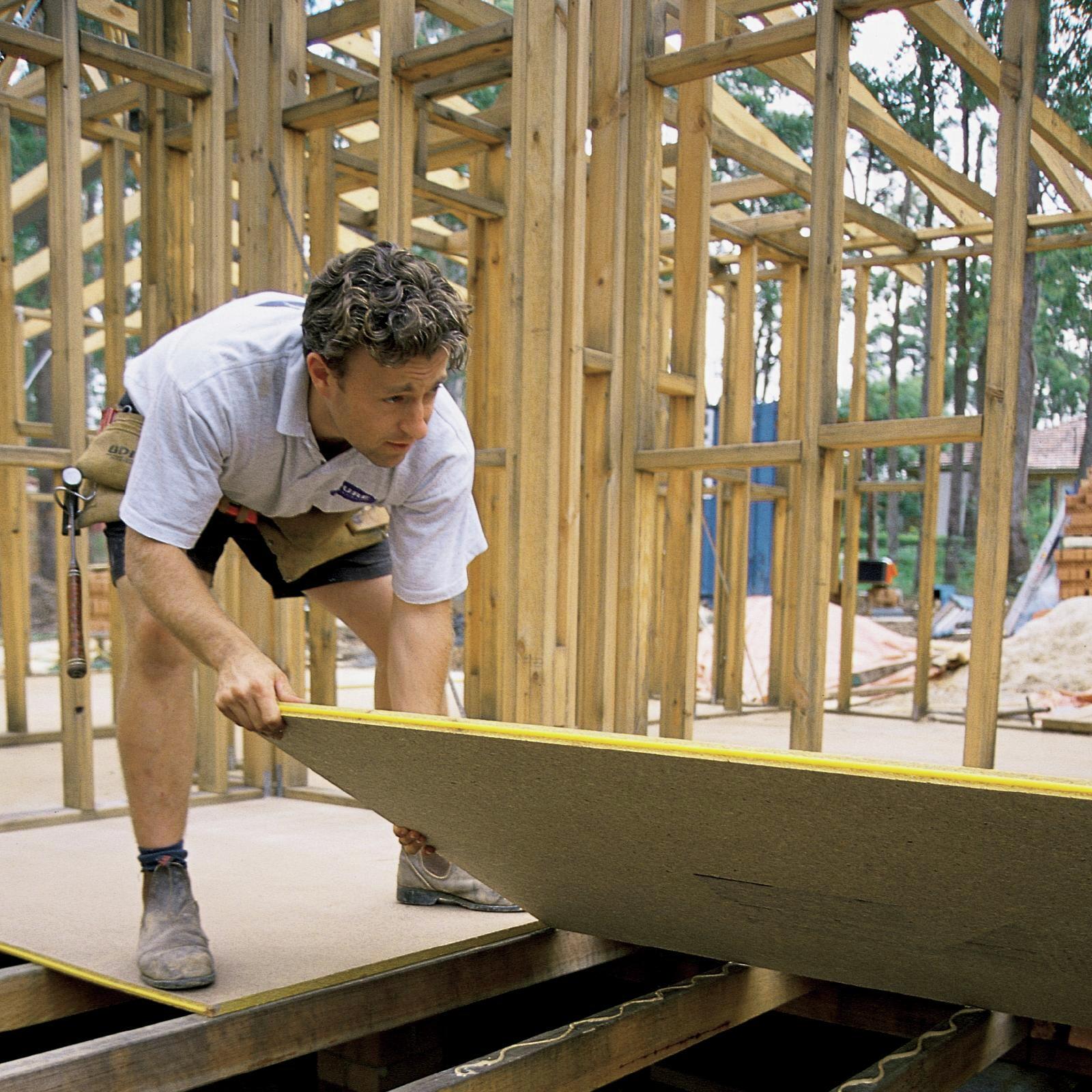 Image via Bunnings showing a common structural floor base of yellow tongue flooring for homes on piers.
Image via Bunnings showing a common structural floor base of yellow tongue flooring for homes on piers.
2. MULTI-LEVEL LIVING
If you’re renovating a 2-storey home, an apartment or townhouse, you’ll have noise issues to contend with. Ever been in an apartment building where the residents above, sound like they’re strutting around their floorboards in high heel shoes? Tap, tap, tap, tap … it’s less catwalk & more tap dance extravaganza, much to your frustration!
Be prepared that your strata body will often dictate what type of flooring is & isn’t allowed in apartment reno’s to minimise unwanted noise impacts from one resident to the next. Those lovely folks on the strata committee will often prefer products such as carpet or hybrid floor planks that largely stop noise issues, dead in their tracks.
Depending on what type of flooring you go with (hardwood, engineered, hybrid, laminate floorboards, vinyl planks, tiles or carpet), you might also be required to install acoustic underlay underneath your new flooring, which, unbeknown to many people, can be a significant added expense to your overall flooring invoice. The cost of certain acoustic underlays alone, can be the very thing that forces you to switch from one flooring product to another.
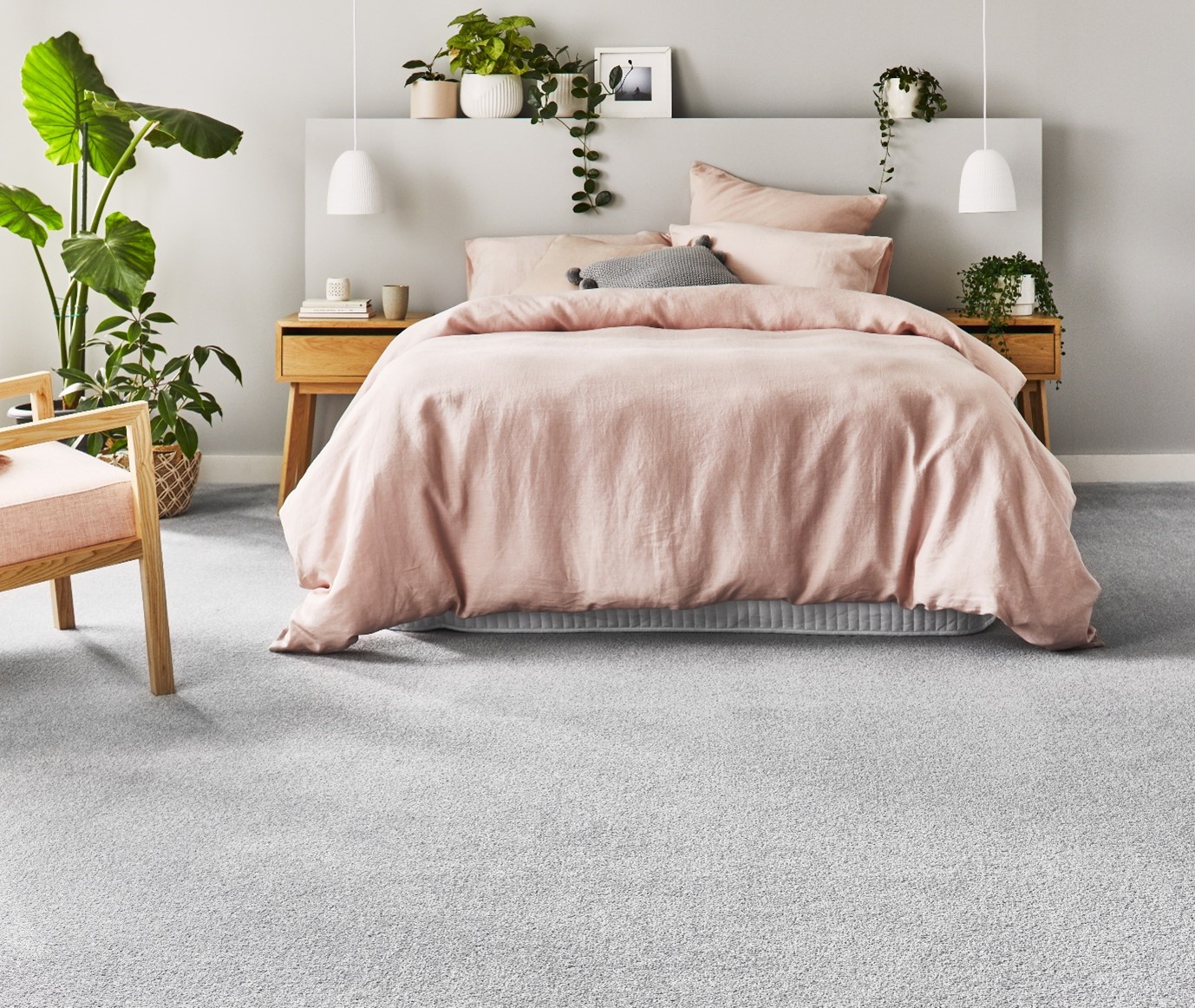 Carpet is common in apartments. Whilst comfortable, it has a higher ongoing maintenance cost, especially for rental properties. Product above: Flooring Xtra’s Eco Plus Andros Village Path Carpet in “Sky Blue” colour.
Carpet is common in apartments. Whilst comfortable, it has a higher ongoing maintenance cost, especially for rental properties. Product above: Flooring Xtra’s Eco Plus Andros Village Path Carpet in “Sky Blue” colour.
3. LOCATION & TRAFFIC FLOW
To help narrow your flooring selections down, you’ll need to think about what part of your home your new flooring will be installed & what activities will take place in those areas.
Are the rooms high or low traffic areas? Is it a formal sitting area that doesn’t get used frequently? Does the space get wet such as a bathroom or laundry? Is it a beach house that must withstand wet, sandy feet & constant visitors?
Thinking through how a space is used, can often narrow your product options down quite significantly, by helping establish what characteristics your new flooring must have. For example, if you have pets in your home, you might want to opt for flooring that has great scratch resistance & durability such as hybrid flooring. If you want to install new flooring in your bathroom but don’t like floor tiles, you may want to opt for vinyl flooring or a floorboard that offers exceptional water resistance which automatically cuts standard laminate floorboards out of the mix. *
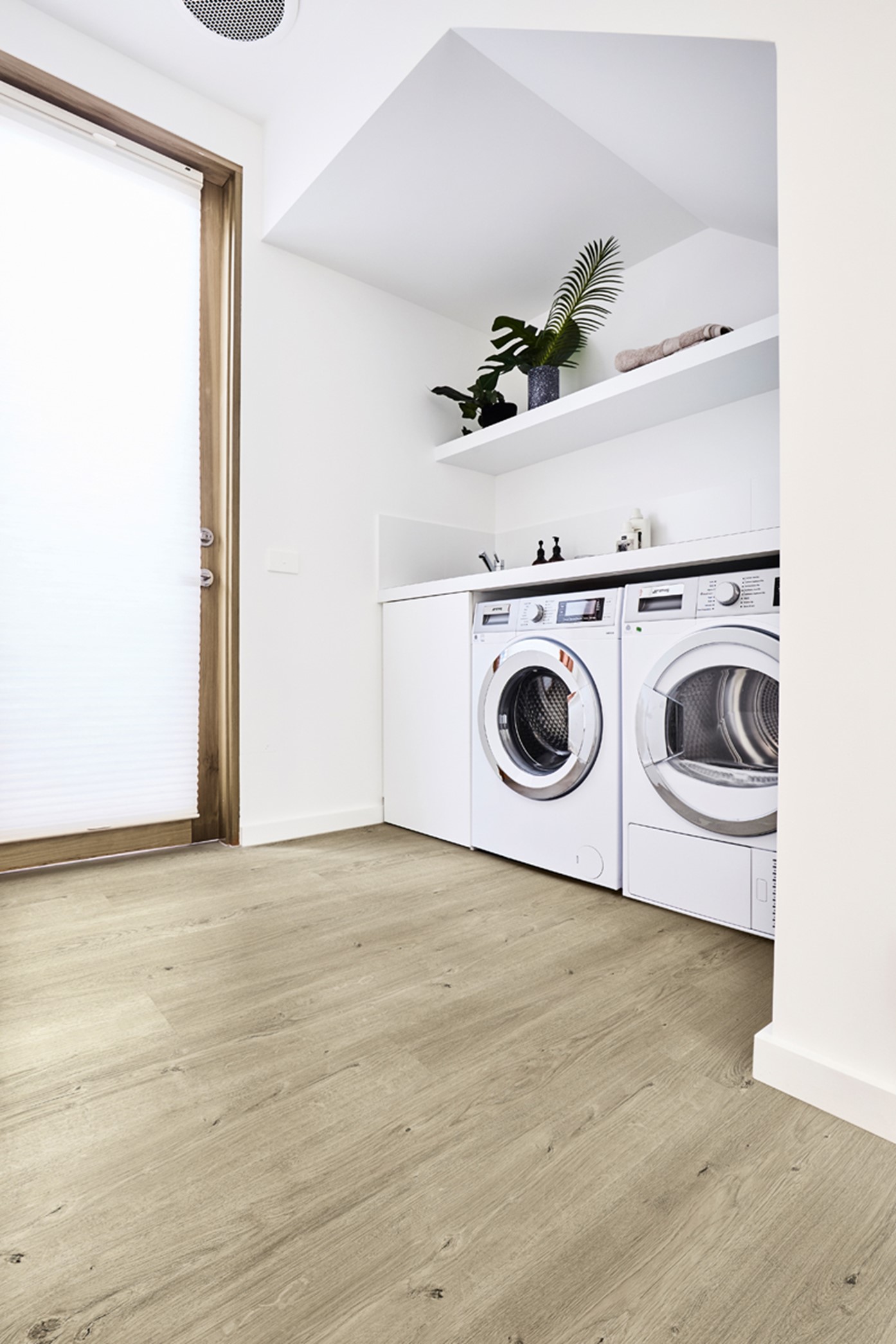 Flooring Xtra’s Merseyside Classic are rigid vinyl floor planks that are completely waterproof & perfect for wet environments such as bathrooms & laundries in some states of Australia. Featured colour:“Dukes”.
Flooring Xtra’s Merseyside Classic are rigid vinyl floor planks that are completely waterproof & perfect for wet environments such as bathrooms & laundries in some states of Australia. Featured colour:“Dukes”.
4. THE OCCUPANTS
As we all gracefully slide into the different chapters of life, the type of flooring in your home starts to matter more than you might realise…
In your twenties & thirties, you’ll want a floor that can survive your wild dance parties, frequent tequila spills & potentially vomit. By your forties & fifties, it’s all about a floor that doesn’t broadcast to the world, every creak of your midnight snack adventures. And let’s not forget your golden years, when you need a flooring surface kind enough to say, “I’ve got you” instead of “Watch out!”, every time your grand kiddies leave their toys lying around.
In one of my recent Space Invaders renovations, I renovated a house for 72-year-old Sandra, a lovely, widowed lady who lives all by herself. Normally I would have installed a hard flooring surface to make Sandra’s small home look larger, but I opted for carpet instead, reducing the chance of serious falls. In this instance, Sandra’s personal safety (as the occupant of the home) dictated the type of floor I ultimately installed.
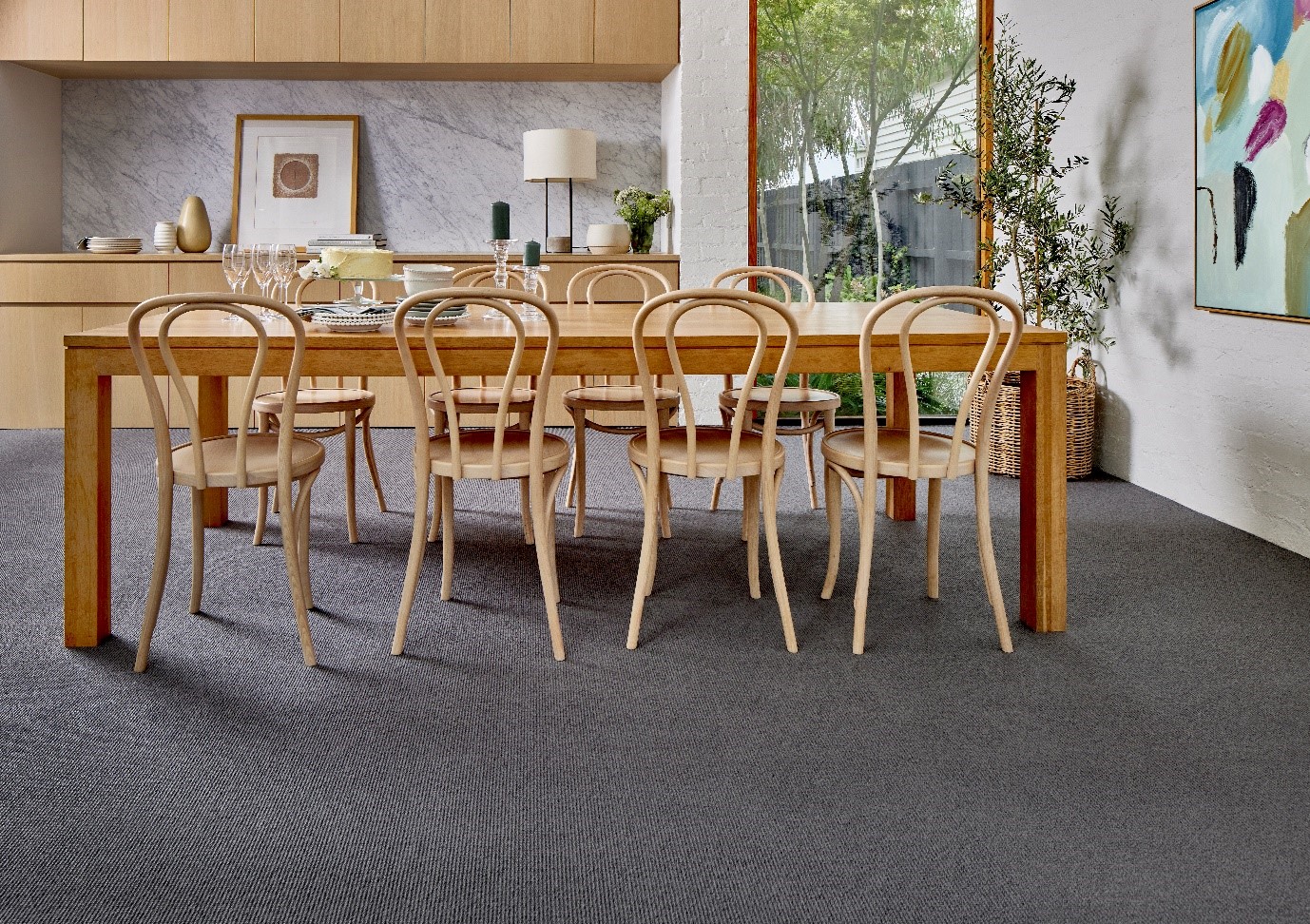 Flooring Xtra’s Hycraft Trinidad carpet in “LaBrea” colour, perfect for colder climates
Flooring Xtra’s Hycraft Trinidad carpet in “LaBrea” colour, perfect for colder climates
& in rooms where you’d typically not install carpet.
5. STYLE
Now to the part that so many people jump to first – looks! Why do we always do that?
Style & looks are always high on everyone’s radar simply because most eager beavers go into their reno’s with a dream outcome in their head. Are you going for a complete style change or is it to complement the style you already have in your home? Casual, chic, contemporary, coastal, Hamptons, classic, rustic, industrial? Each flooring style naturally lends itself to a particular interior design look so make sure the flooring you buy, will suit the “existing” or “desired” style of your home.
In colder climates, you might want to opt for carpet in some or all the rooms. Textured loop pile carpets offer a contemporary look that work across a wide range of homes from coastal to modern apartments, while a plush pile carpet lends itself to a more sophisticated & classic look. Herringbone flooring works in homes that have a refined aesthetic, while a wide timber or timber-look floorboards are universally popular in most modern family homes.
6. COLOUR
Now we’re getting into the nitty & gritty… the colour of your flooring. Light versus dark flooring? Can’t decide & going the middle of the road option?
Dark floors often offer a dramatic look that can become a real feature in your home while lighter floors tend to be safer and complement a broader interior design & colour palette.
From a practical perspective, hard flooring such as floorboards in lighter colours, tend to hide dust but certain floorboards can scratch more easily. Lighter flooring (for both carpet & hard flooring styles) can make a space feel larger. Conversely, darker colours can make your home appear more confined, cosier & intimate.
Now here’s a little nugget of gold for you to help get your colour right – pay attention to how much natural light spills into your home, at different times of the day. If you’re someone who likes to leave no stone unturned, grab a sample piece of your top 3 flooring options, place them on the floor in your home & observe how the samples look at different times of the day. You’ll soon discover which samples are too light or too dark & which ones clash with everything else going on in your home. Consider this a colour test drive, before you park your final decision.
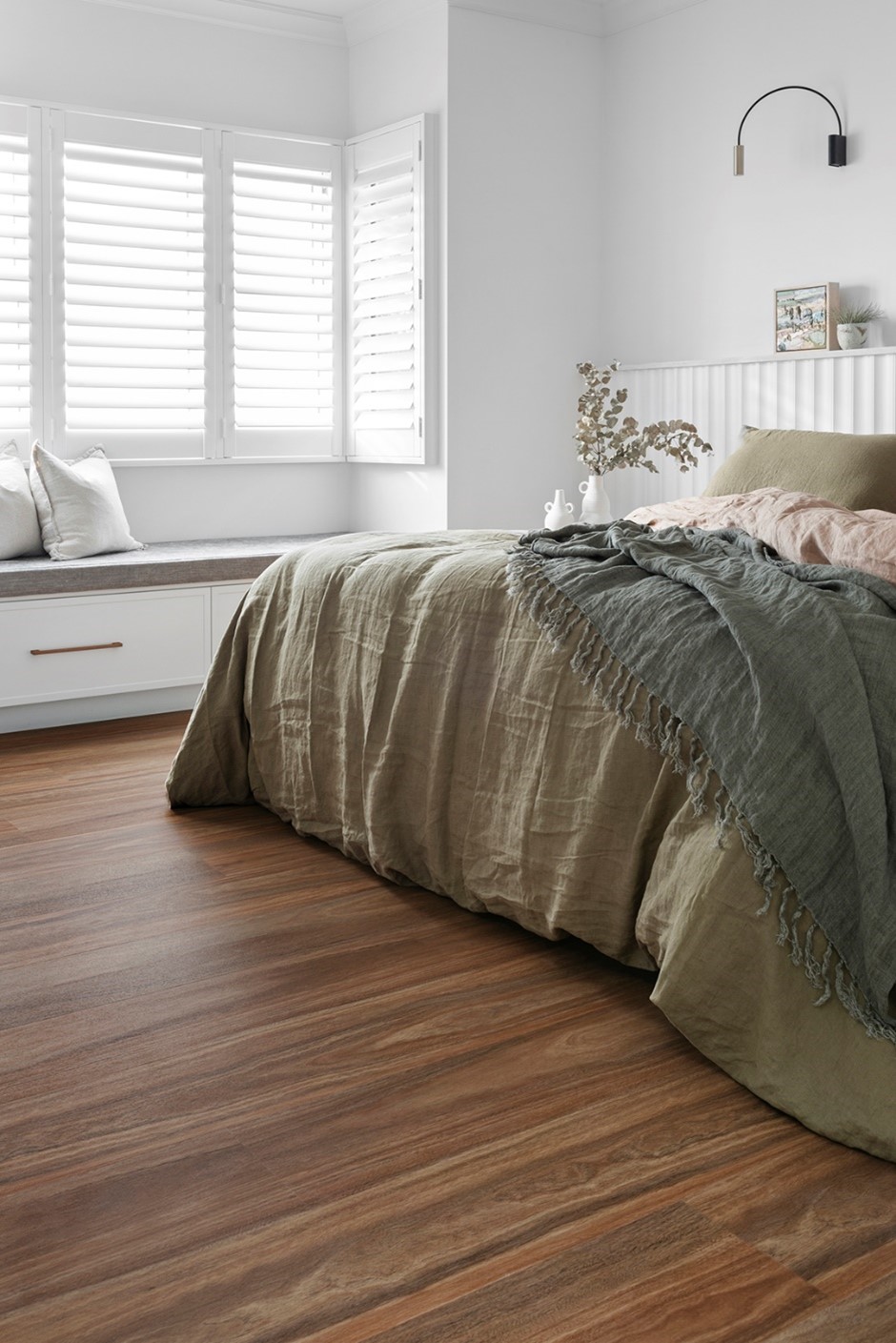 The darker colour of Flooring Xtra’s Cape View Hybrid LS Barossa Spotted Gum Floorboard
The darker colour of Flooring Xtra’s Cape View Hybrid LS Barossa Spotted Gum Floorboard
adds incredible warmth to this room, making it feel a lot less sterile.
7. COMFORT
Yes, you need to consider how comfortable your new flooring will be because let’s face it, it’s the only thing catching you when gravity is no longer on your side …
Comfort encompasses a range of elements – softness, warmth, acoustics, right down to the unpleasantries of allergies.
Carpet, carpet tiles & rugs bring great acoustics, warmth & softness into any room but may not be great for those who suffer allergies, unless you buy a more expensive wool carpet that is naturally hypoallergic.
Tiles can look amazing on your floor & are favoured by many for being very low maintenance (especially in warmer locations), but they tend to rank a lot lower on the comfort side.
Hard flooring such as hardwood, engineered, hybrid & laminate floor planks are universally popular because not only do they look freaking fantastic, they’re comfortable to walk on, are easily cleaned & don’t harbour allergens that make you sneeze all day.
8. YOUR BUDGET
Let’s talk money honey, especially with the cost-of-living crisis making daily headlines. It’s important to establish what you’re able or willing to spend. But it’s not just the product cost you need to think about.
When buying flooring, your budget needs to include the actual product cost, floor preparation, labour installation & potentially freight costs from the supplier (expect a large semi-trailer to turn up to your place if you’re reflooring your whole house, which someone (most likely you) will be paying for).
Talk to your local flooring store about your home & the budget you can spend & they’ll show you what product options you can choose from. Most flooring stores these days have their products assembled in a “good, better, best range” making it super easy for homeowners to cut to the chase & whittle their options right down.
In terms of hard flooring, laminate floorboards are your cheapest product option with real hardwood flooring, the most expensive. Vinyl & hybrid flooring sit in the middle of the affordability range, with engineered flooring, a notch up from that. Carpet comes in all price ranges but the cheaper the carpet, the less comfortable it may be, while tiles range from the budget to the bling to suit all budgets.
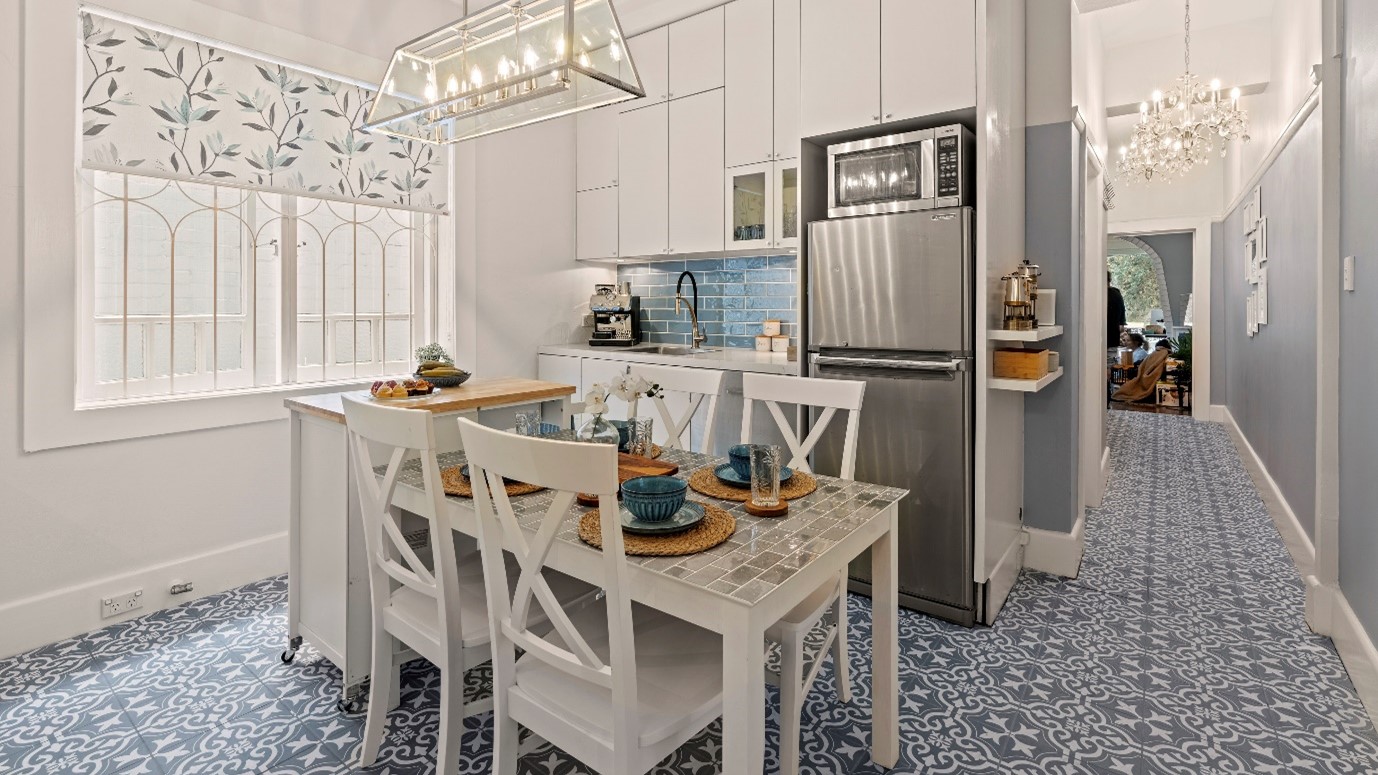 Tiles are a budget friendly flooring option but the more decorative they are, the more expensive they become.
Tiles are a budget friendly flooring option but the more decorative they are, the more expensive they become.
9. MAINTENANCE
Let’s be honest, we’d all rather be binge watching our favourite TV shows than cleaning our floors. No-one likes the acrobatic feat of vacuuming under their furniture, doing unintentional yoga with a household appliance, but it is another consideration…
No two flooring styles & materials are equal, and this couldn’t be truer when it comes to ease of maintenance. Some flooring products will require hardly any maintenance while others will demand significantly more care or some sort of specific care. Dust will be more obvious on glossy hard flooring & less visible on products like carpet.
Think long & hard about how much time & effort you want to spend cleaning your floors each week because cleaning is inevitable. Engineered floorboards, for example, will require a bit more care than vinyl or laminate. Carpets such as solution-dyed nylon, polypropylene & triexta yarns are easier to care for, than other types of carpets.
Once you narrow your options down, be sure to check with your supplier what cleaning & maintenance will be required to keep your floors looking great.
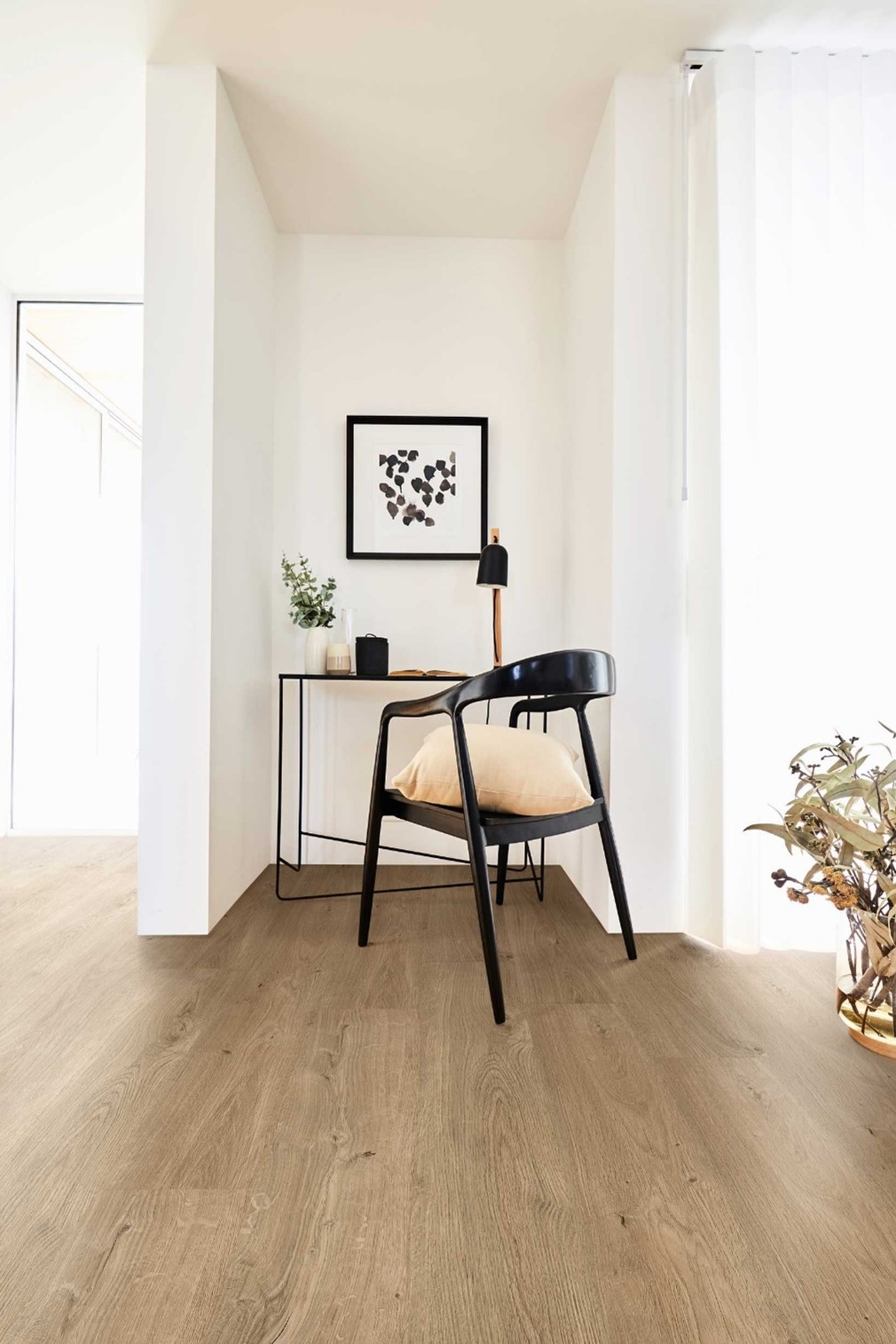
Flooring Xtra’s Merseyside Classic Rainford Hybrid Floor Planks in “Blackbutt” colour
is a low maintenance flooring option due to its non-gloss finish.
10. SUSTAINABILITY
Sustainable flooring refers to flooring materials that are eco-friendly, both in terms of their production & life cycle impact, reducing the demand on natural resources & environmental impact. Imagine flooring that not only whispers “I’m great looking” but also proudly declares “I saved 3 trees & a possum today!”
While some people couldn’t give 2 hoots about sustainability, a great deal of people now do. If it’s important to you, there are plenty of sustainable flooring options to choose from these days such as wool carpets & engineered timber flooring which are biodegradable & naturally sourced. Sure, your sustainable floor might not wear a superhero cape, but these products are definitely doing their part in the battle against environmental villainy.
When thinking about your flooring, ponder the full lifecycle of your flooring. Spending a little bit more upfront, may see your product last a lot longer, without it heading to landfill prematurely.
Some carpet underlay products such as the Dunlop Envirotred™ are excellent sustainable options, constructed from recycled materials, that extend the life of your flooring. These sort of flooring products are the unsung hero in the battle against waste & whilst your sustainable floor won’t save the planet single-handedly, it will do its bit for the green revolution.
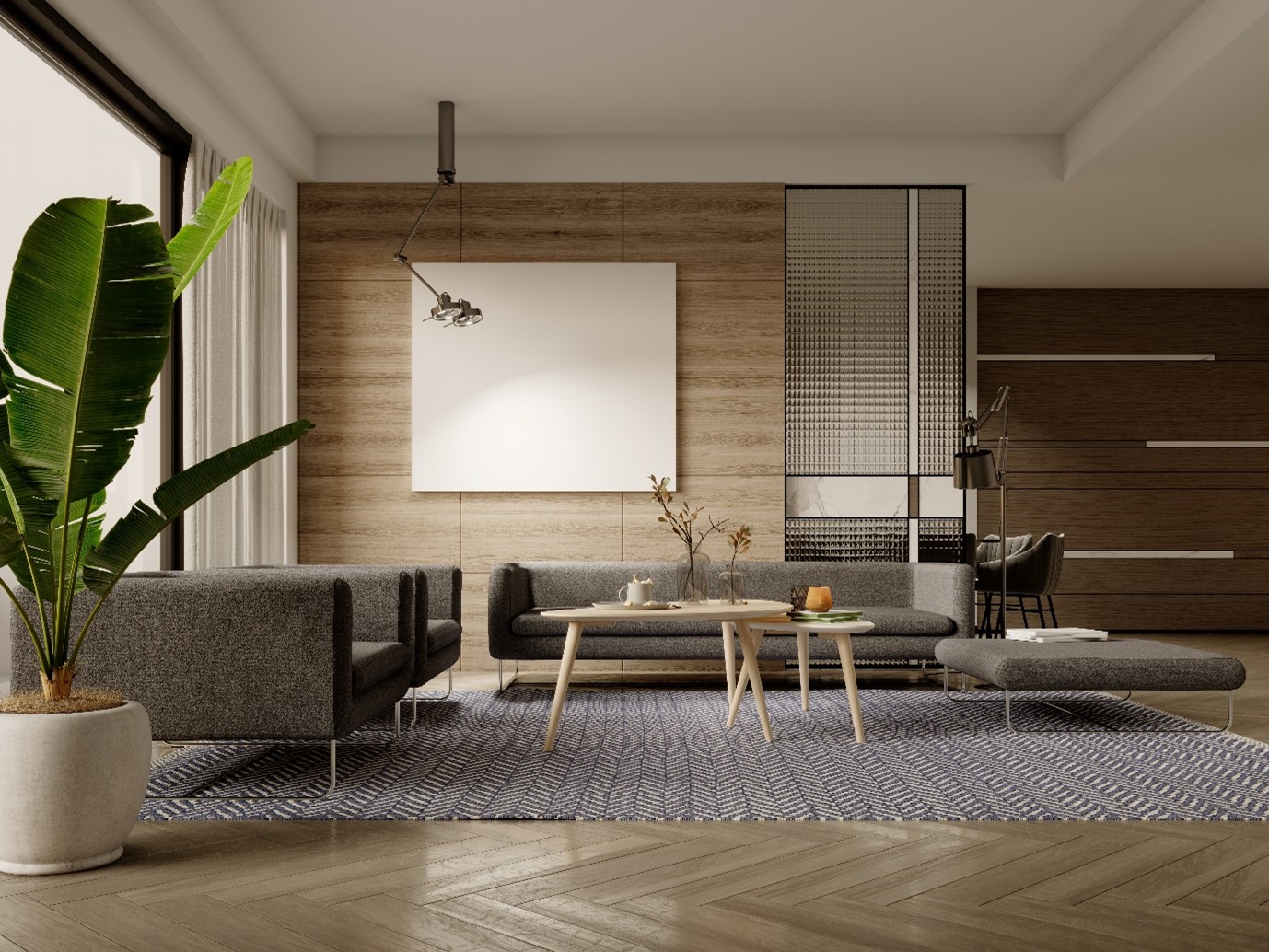 Sustainable flooring can be great for the environment whilst still adding luxury to your home.
Sustainable flooring can be great for the environment whilst still adding luxury to your home.
So, there you have it … who would have thought there’s so much to consider when selecting your flooring? By thinking through these points, you’ll be able narrow down the endless sea of options, to your final chosen one. Don’t forget, great flooring stores like Flooring Xtra have knowledgeable flooring experts ready to help to minimise confusion so you feel confident with your decision (& no, I’m not getting paid to say this).
Last but not least, over the last 6 months I’ve renovated 10 houses for Season 4 of Space Invaders & are excited to share that Episode 1 kicks off this Saturday night – 7.30pm on Channel 9. Every Saturday night for the next 10 weeks, you’ll see me renovating a wide raft of homes, all on a very tight budget. I also promise to send you an email every Sunday morning for the next 10 weeks with all the before & after photos & an outline of what I did & why. I hope you enjoy those emails (which I promise won’t be as long as this blog) 😉
As always, my team & I would love to hear your feedback in the comments box below & are happy to answer any questions you have.
Much love,
Cherie x
*Disclaimer: In some states of Australia, building regulations for vinyl planks, vinyl tiles & hybrid flooring vary, meaning they may not be suitable for areas requiring water resistance such as bathrooms & toilets. Always seek advice from your flooring professional for the correct advice on local regulations. Always follow the manufacturers recommended installation instructions & guidelines. Not following these instructions could make the product not fit for purpose, for the area its being installed in, potentially voiding your warranty. To ensure you get the appropriate product for your home, always consult your flooring professional

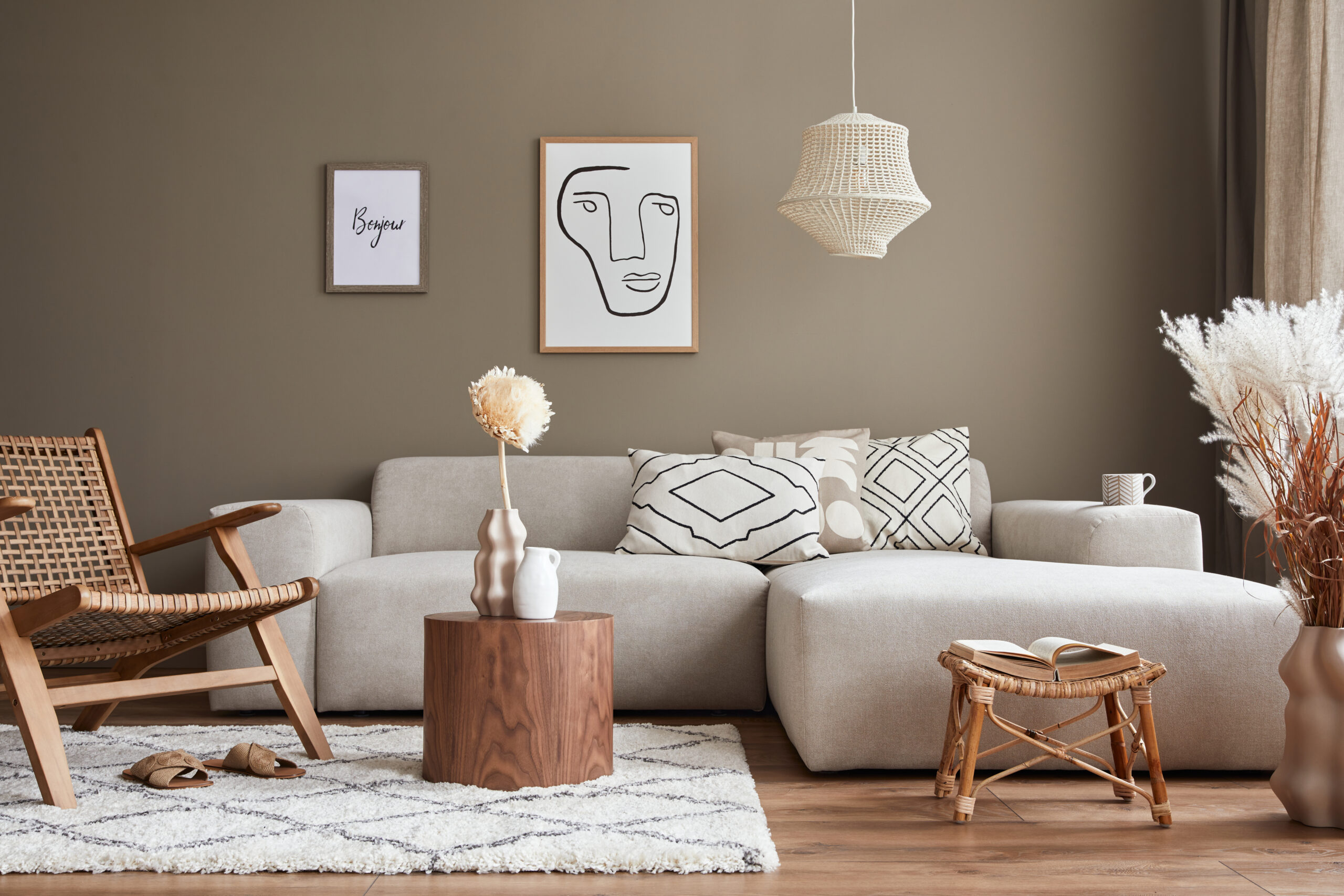

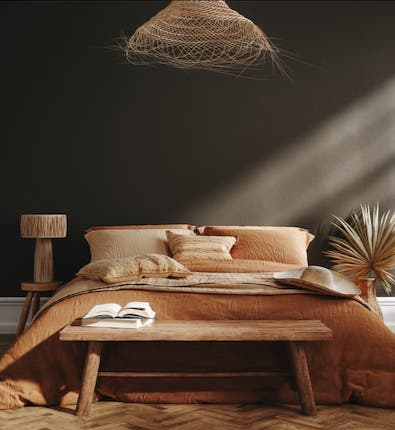
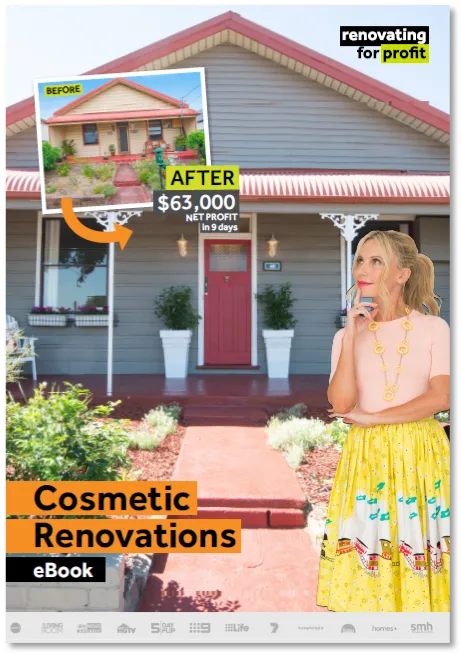
Hi All,
Great article as we are in the process of choosing floors for our current home.
Do flooring extra offer a special price for all students ?
Regards
Michael Grace
Hi Michael, Flooring Xtra aren’t a member of our trade group at the moment. All current flooring deals are in your Home SuperSaver portal. Cherie Crew x
Excellent 10 point article.
I am about to renovate my PPR flat.
This information will help me
Thanks
Can these be layer on a tiled floor? Asthma prevents lifting of tiles?
Hi Joy, Hard flooring can be layed directly on top of tiled floors provided those tiles have a smooth surface, are perfectly level & are not lifting up anywhere. Cherie Crew x
Great blog Cherie, you have truly covered all bases and has come at the right time as this will definitely help me when choosing my next floor ! Thanks and stay well x
Thanks Cherie, a lot of useful information. We will be doing our floors in the near future so very helpful.
Love Space Invaders- can’t wait to see the amazing transformations you and the team make this season!
Thank you, as always well considered advice. Thank you for giving your time to help others to avoid mistakes.
Your a legend.
Thanks Christine! Cherie Crew x
Hi Cherie,
Great advice, thanks so much. I’d love to lay a new floor but my whole house is tiled except for the 3 bedrooms and they’re not laid very evenly, so would I have to lay down a flat surface like yellow tongue first and then the floorboards and then wouldn’t all those layers make my floor too high?
Cheers,
Deborah
Hi Deborah, We suggest you head across to https://www.flooringxtra.com.au/ and locate your local store and speak to one of their flooring experts. Cherie Crew x
Dear Cherie and team,
I wanted to express my gratitude for the insightful article on flooring options.
Currently, our downstairs area boasts well-maintained terracotta tiles, while the staircase and upstairs are adorned with aging, stained carpeting. After much consideration, I am leaning towards opting for easy-to-clean vinyl for staircase and upstairs.
While exploring various vinyl plank options, I find myself faced with a dilemma regarding the staircase. Most products on the market seem to be in plank form, and I am curious if there are viable vinyl roll alternatives for this specific area. Do you think rolled vinyl will be easier to lay?
If you could provide insights or recommendations on suitable vinyl solutions for staircases, I would greatly appreciate it.
Thanks heaps
Hi Sonja, thank you for your kind words. We suggest you head across to https://www.flooringxtra.com.au/ and locate your local store and speak to one of their flooring experts. Cherie Crew x
Hey Cheri, and team,
this has been a great article to read, i was wondering about another style of flooring you haven’t covered and that’s to polish and existing slab. I recently bought a standalone unit and I’m at the very beginning stages of brainstorming, the type of floor to go with the aesthetic i have in mind. So in my case I’m considering polishing my concrete floors throughout the unit V’s solid timber floor to work with a japandi style, both can work well from what i have researched, so i wondering about its longevity, and how well it is to clean stains, spills excreta and how they perform in winter V’s summer. i live in Melbourne
Regards
Hadas
Hi Hadas,
Polishing your concrete floors could be a great fit for a Japandi aesthetic, offering durability, ease of cleaning, and minimal maintenance. Concrete floors handle stains and spills well, especially if sealed properly, and can be quite long-lasting. However, they can feel cold in winter, especially in Melbourne’s climate, but can stay cool in the summer, which might be a benefit.
Solid timber floors, while also fitting the Japandi style beautifully, require more maintenance to prevent scratches and damage from spills. They’re warmer underfoot in winter and can add a cosy feel to your home. Timber floors might need refinishing over time but can last for decades if well-maintained.
Both options have their pros and cons regarding longevity, cleaning, and seasonal performance. Concrete is lower maintenance and handles spills better but can be cold. Timber provides warmth and a classic look but requires more care to keep it looking its best. Consider your lifestyle, the level of upkeep you’re willing to commit to, and how each option aligns with the Japandi aesthetic when making your decision. CB x